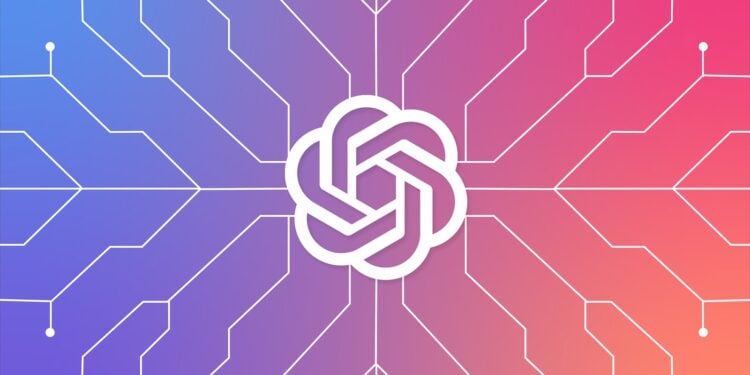Jony Ive, the former Apple design chief, has been working with OpenAI on a new, previously secretive AI hardware device for some time. The project is generating a lot of attention, not least because Ive is responsible for some of the most influential product designs of the past decades. But despite high expectations, the device's development appears to be delayed. A Financial Times report suggests the team is struggling with three key issues that could delay its market launch.
Since Ive left Apple, it has long remained unclear what he would be working on next. At the beginning of the year, he appeared in a video with OpenAI CEO Sam Altman, in which the two discussed a new AI device. However, they didn't reveal any details. They remained mere hints—enough to pique the tech world's curiosity, but too little to spark concrete ideas. A discussion quickly arose about what exactly Ive and Altman might be planning. All that is certain is that the project is internally called "io" and that it is neither a phone nor a pair of glasses.
A device without a known shape
The search for the possible form factor of this AI device has become a mystery. Sam Altman explicitly emphasized that "io" is not smart glasses, and both he and Jony Ive also ruled out other known device categories – including smartphones, smartwatches, smart rings, and in-ear headphones. This suggests that something is being created that doesn't fit into any previous category. Despite the secrecy, there is a lot of speculation. Many suspect that OpenAI is deliberately playing with expectations. Those who ask ChatGPT to imagine the device usually get a similar image: a smooth, pebble-shaped object – beautiful, but with no real clues as to its function. This makes the development process all the more exciting for Jony Ive's team. The challenge seems to be to find a form that is new yet still feels familiar.
Delayed by three key challenges
According to the Financial Times report , the device's release, originally expected next year, may take longer due to three fundamental issues that OpenAI and Ive are currently working on.
Computing power as the biggest hurdle
A key problem concerns the required computing power. OpenAI is already struggling to provide enough capacity to run ChatGPT reliably. A proprietary hardware product that continuously communicates with OpenAI's AI models would require significantly more computing resources. A source close to Jony Ive explained that it is already difficult to provide enough computing power for ChatGPT—let alone for a standalone AI device. Without sufficiently powerful infrastructure, the device would hardly be of any practical use. This demonstrates that the technical basis of the idea is not yet fully secured.
Data protection remains a sensitive issue
The second major issue concerns data protection. According to the report, the device is supposed to be constantly on—unlike popular voice assistants, which only respond when an activation word is spoken. This would mean that cameras and microphones would be permanently active. Such a concept raises obvious data protection questions. How can privacy and constant availability be reconciled? For many potential users, the idea of a device that is always listening or watching would be difficult to accept. Such a design could also pose legal problems, especially in regions with strict data protection regulations.
A personality for the device
The third challenge is less technical than conceptual. The team led by Jony Ive and OpenAI is trying to give the device a personality. The idea is for it to act like a friendly companion—someone who is helpful but not intrusive. As one source put it: The goal is a “friend who is a computer—not a weird AI girlfriend.” This sounds simple, but is extremely difficult to implement in practice. The developers have to ensure that the device only responds when it is truly useful and that it knows when to hold back. This balance between usefulness and restraint is one of the biggest challenges in AI system design. Even ChatGPT itself occasionally struggles to find the right tone or the right moment—a problem that would be even more noticeable with a physical device.
Production and outlook
OpenAI is reportedly working with Chinese contract manufacturers for the hardware. However, final assembly is believed to take place outside of China. The project is apparently still in its early stages of development, and despite the delays, the goal remains to launch the device sometime next year.
Jony Ives' balancing act between innovation and responsibility
The new AI device from Jony Ive and OpenAI remains one of the most exciting, yet mysterious, projects in the current technology landscape. The delays demonstrate that the combination of innovative design, artificial intelligence, and data protection is more complex than it first appears. Jony Ive is once again attempting to reconcile technology and humanity—this time in the form of an intelligent companion that requires neither a screen nor a keyboard. But until the three fundamental problems are solved, "io" remains more of an idea than a product. The only thing that is certain is that Ive and OpenAI are working on something that could change the way people interact with AI—provided they find the right balance between technology, trust, and personality. (Image: Shutterstock / Marciobnws)
- iPad mini 8: Rumors, technical features & release date
- iPad Pro Upgrade: Faster, more powerful – but without a second camera
- Apple is working on glasses – AR experience comes with successor model
- Apple launches reorganization: New head of AI sought
- Apple Vision Pro: New Dual Knit Band for more comfort?
- Apple pursues rare strategy in launching smart glasses
- Apple plans AI smart glasses and stops Vision Air development
- iPhone Fold 2026: Apple's first foldable smartphone in detail
- Apple M5 chip leak reveals powerful GPU performance in the iPad Pro
- New Siri features could become reality with iOS 26.1
- Apple accelerates production of M5 Macs and displays
- Apple is testing LLM Siri internally with a ChatGPT-like app
- Intel asks Apple for support – what this could mean
- Vision Air and iPhone 2027: Apple plans new display technology
- Report: iPhone Fold is reminiscent of iPhone Air in double form
- Apple Vision Pro: R2 chip should significantly increase performance
- iPhone 18 Pro: All the latest rumors about design and technology
- iPhone 18 & iPhone Fold: Apple expects sales boom in 2026
- iPhone Fold & iPhone 18 Pro: Faster thanks to new C2 modem
- Apple plans OLED MacBook Pro with touch and new design
- Apple Glasses News: Market launch planned for 2026 or 2027
- iPhone 18 will probably come without Face ID under the display
- MacBook Pro 2026: Apple plans major upgrade with OLED
- Apple Intelligence: China version with censorship planned





